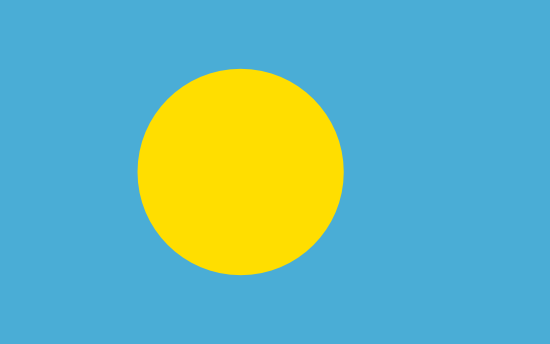Best things to do in Palau
Find out more about those top places in Palau
Find out more about those top places in Palau

Tucked away in the vast blue canvas of the Pacific Ocean lies a tropical treasure so breathtaking it might just convince you to sell all your belongings and live in a hammock: Palau. Just 500 miles east of the Philippines and about 2,000 miles south of Tokyo, this tiny island nation may be one of the smallest countries on the planet, but it packs an enormous punch when it comes to natural beauty, underwater adventures, and unforgettable experiences.
If you’ve never heard of Palau before, don’t worry—most people haven’t. But trust us, once you discover the magic of this paradise, it’ll rocket straight to the top of your bucket list. Whether you're looking for things to do in Palau, searching for the best places to visit, or just trying to plan the ultimate sightseeing escape, this Palau travel guide is here to help you get started—with a laugh or two along the way.
Palau gained independence in 1994, making it one of the youngest sovereign nations in the world. Before that, it had quite the journey: it was colonized by Spain, sold to Germany, claimed by Japan, administered by the United States under UN trusteeship, and finally said, “Okay, we’re good now,” and went solo.
In English, you might see it written as "Belau," reflecting the local pronunciation. It was also once spelled "Pelew" in the days when spelling rules were more like vague suggestions. But no matter how you spell it, Palau means one thing: tropical bliss with a side of wow.
Let’s get real. You're not flying across the Pacific just to chill in your hotel room. You want action. You want jaw-dropping views. You want something to make all your Instagram followers green with envy. And Palau delivers.
This island nation is a dreamland for divers, snorkelers, nature lovers, and basically anyone who doesn’t hate sunshine and coral reefs. It's like someone combined the best of Southeast Asia and the Pacific and decided to keep it a secret.
Palau may be small, but when it comes to things to do, it goes full throttle.
If you're a diver, Palau will ruin you for every other destination. The Blue Hole is a world-famous dive site that drops into a vertical underwater cavern with otherworldly vibes. Expect dramatic walls, rare marine species, and the kind of visibility that makes you wonder if your mask has X-ray vision.
Jellyfish Lake is one of Palau’s most iconic places to visit. It's home to millions of stingless jellyfish that float around like golden blobs from a sci-fi movie. It’s part peaceful meditation, part "wow-I’m-floating-in-a-biolab" experience.
The Rock Islands are Palau’s crown jewels: mushroom-shaped islets scattered like emeralds across the sea. Kayaking through these turquoise waters is a must-do, and you’ll find secret coves, pristine beaches, and maybe even a dolphin or two. It's sightseeing in its most serene form.
No, not the candy bar either. Palau’s Milky Way Lagoon is a surreal swimming spot filled with white limestone mud believed to have healing properties. Locals and visitors alike slather themselves in the mud and take goofy selfies. Don’t fight it—join the mud party.
History nerds, rejoice. Palau is littered with sunken planes, ships, and tanks from World War II. The waters are a fascinating underwater museum where corals and fish now rule the rusting relics. Wreck diving here is both haunting and beautiful.
So what are the absolute top attractions in Palau? Here’s the shortlist of can't-miss spots to add to your travel plans:
Koror Island – The main hub of activity, with restaurants, dive shops, and cultural experiences.
Babeldaob Island – Palau’s largest island, home to waterfalls, traditional villages, and scenic drives.
Ngardmau Waterfall – Take a jungle hike to this spectacular waterfall and soak in the views (and maybe get soaked yourself).
Belau National Museum – Learn about Palauan culture, history, and mythology. It’s compact but packed with charm.
Etpison Museum – Another gem in Koror, offering fascinating insights into Palauan heritage and life.
Want to escape the (minimal) crowds and experience Palau like a local castaway?
Kayangel Atoll – A secluded slice of heaven at the northernmost edge of Palau. Think white sand, zero stress, and hammocks that demand you nap.
Sonsorol and Tobi Islands – Remote outer islands where traditional life continues and tourists are rare enough to be newsworthy.
Badrulchau Stone Monoliths – Mysterious ancient stones believed to have supported a massive bai (meeting house). They're Palau’s version of Stonehenge—only with better weather.
No travel guide to Palau would be complete without a few practical notes:
Currency: The US dollar is the official currency. No conversion headaches here.
Language: English is widely spoken, along with Palauan.
Transport: Taxis are available in Koror, but for island-hopping, you’ll need boats or small charter flights.
Best Time to Visit: November to April is dry season and ideal for diving and sightseeing.
And here’s a bonus tip: Palau is deeply committed to environmental protection. You’ll need to sign the Palau Pledge upon entry, promising to treat the country with care. Think of it as a gentle nudge to not step on the coral or throw your snack wrapper into the ocean. Be cool.
In a word: yes. In more words: Palau is a once-in-a-lifetime kind of place where nature is still wild, the waters are still clear, and the people are still genuinely happy to see you. It’s not just about finding places to visit or ticking off top attractions—it’s about discovering a corner of the world where beauty feels untouched and peace is the default setting.
So if you’re looking for a destination that combines tropical vibes, epic things to do, cultural depth, and enough coral reefs to make your goggles fog up with excitement, Palau is your next great adventure.
Ready to dive in?